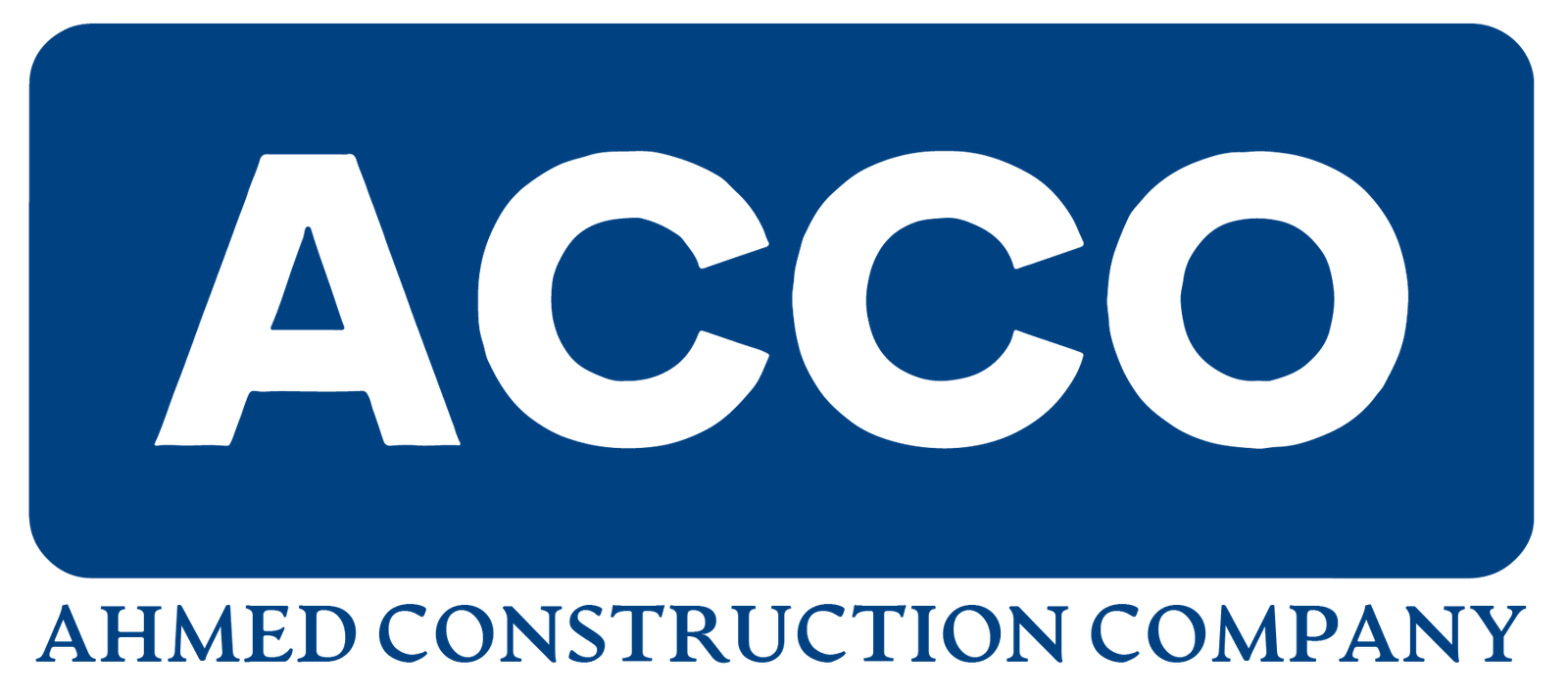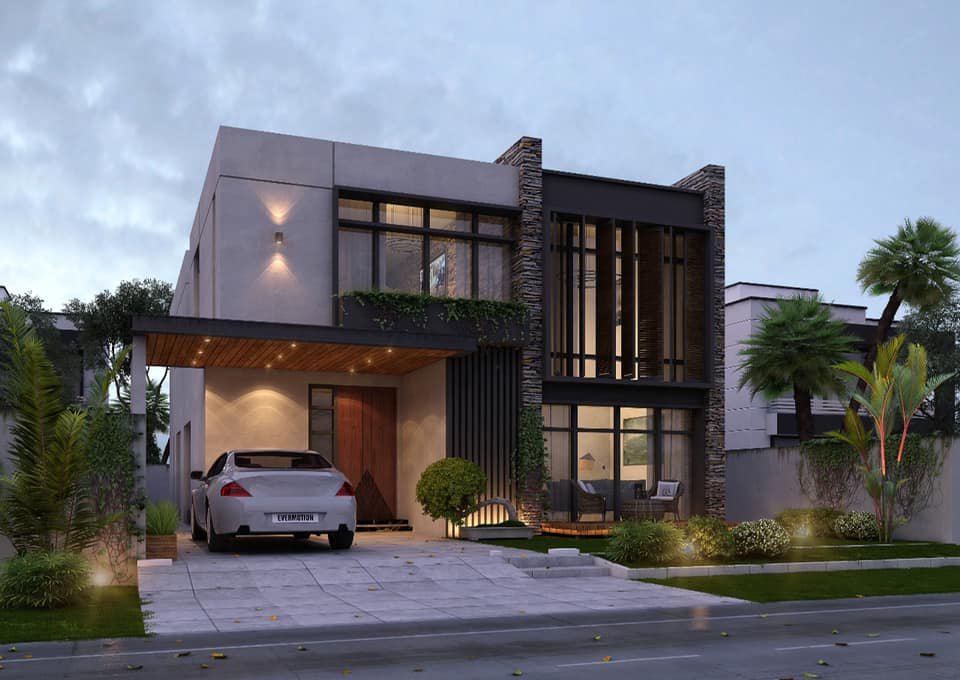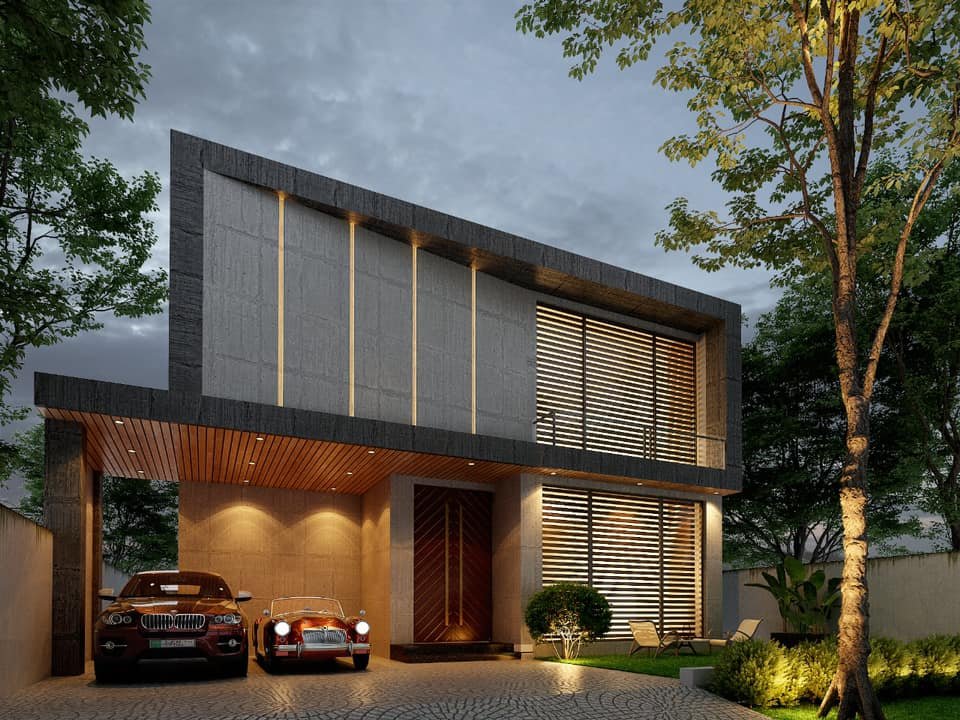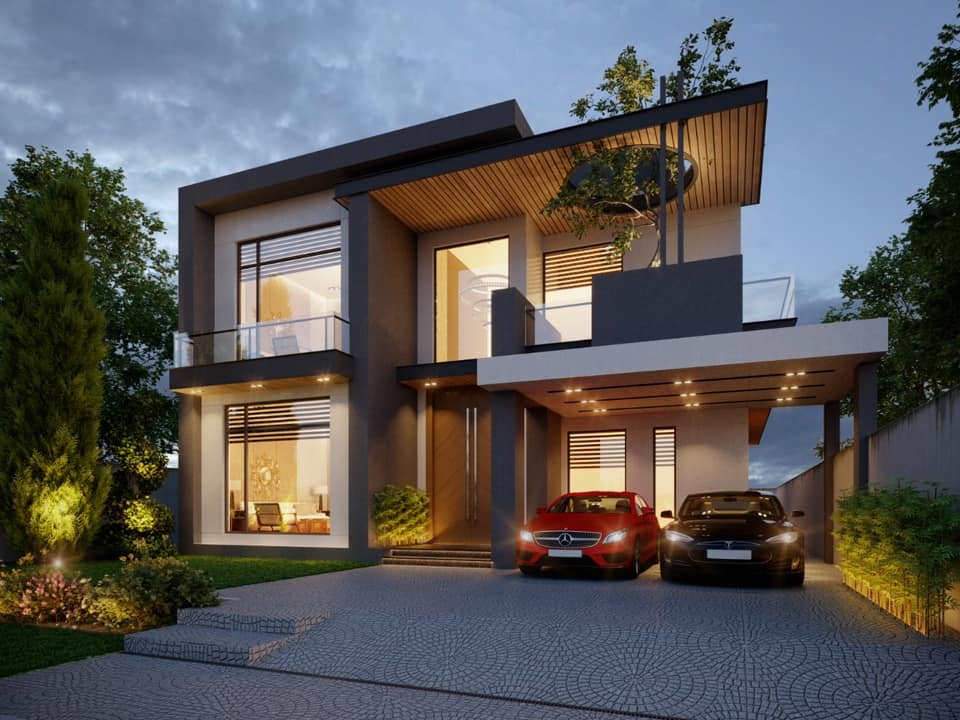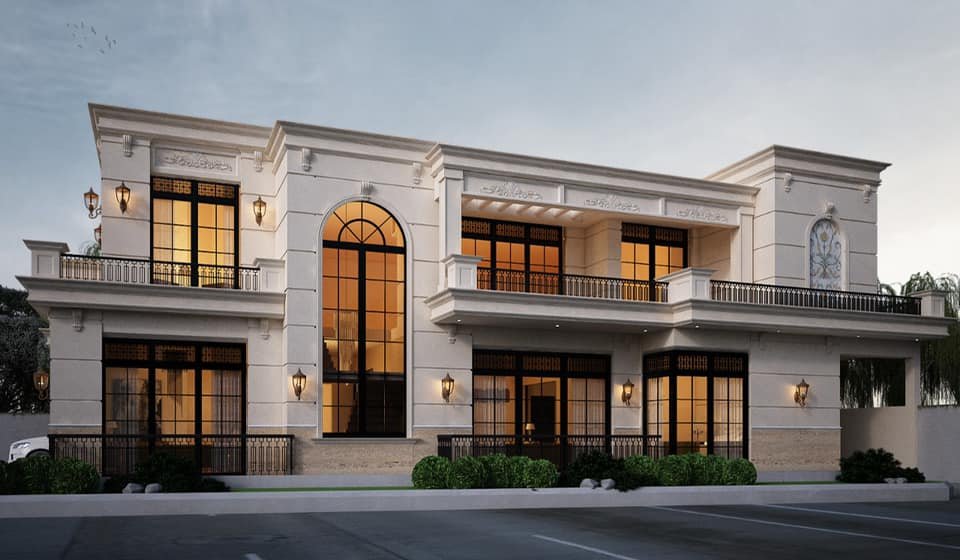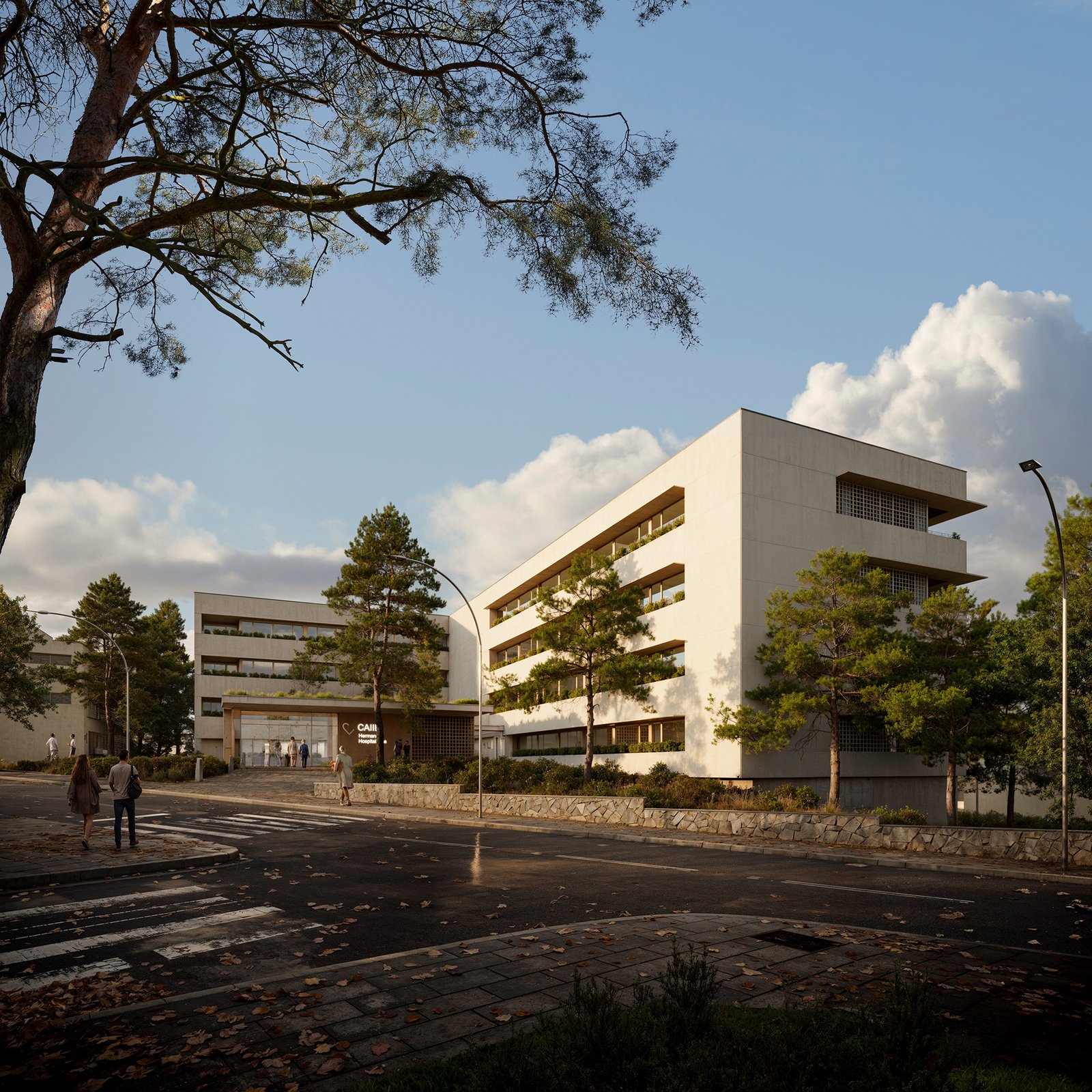
ACCO Innovative Hospital Design in Pakistan: How Architecture is Transforming Healthcare
| Main Topics | Subtopics |
|---|---|
| 1. Introduction to Innovative Hospital Design | 1.1 Overview of Healthcare Challenges in Pakistan |
| 1.2 Importance of Innovation in Hospital Design | |
| 1.3 Role of ACCO in Leading Hospital Innovation in Pakistan | |
| 2. The Evolution of Hospital Architecture | 2.1 Historical Overview of Hospital Design in Pakistan |
| 2.2 Shifts in Design Philosophy: From Functionality to Innovation | |
| 2.3 Key Milestones in the Evolution of Hospital Design | |
| 3. Patient-Centered Architectural Innovations | 3.1 Redefining Patient Experience through Design |
| 3.2 Private Patient Rooms and Family-Centric Spaces | |
| 3.3 Inclusive Design for All Patient Demographics | |
| 4. Technology-Driven Hospital Design | 4.1 Smart Hospital Technologies: Integration and Impact |
| 4.2 Designing for Telemedicine and Remote Care | |
| 4.3 Data-Driven Design: Using Analytics to Optimize Space and Functionality | |
| 5. Sustainable and Eco-Friendly Design Practices | 5.1 Importance of Green Building in Healthcare |
| 5.2 Energy-Efficient and Low-Impact Materials | |
| 5.3 Water Management and Sustainable Waste Disposal Systems | |
| 6. Enhancing Safety and Infection Control | 6.1 Designing for Infection Prevention |
| 6.2 Use of Antimicrobial Materials and Surfaces | |
| 6.3 Air Quality and Ventilation Innovations | |
| 7. Flexibility and Future-Proofing in Design | 7.1 Modular Construction and Expandable Facilities |
| 7.2 Multi-Functional Spaces for Diverse Medical Needs | |
| 7.3 Preparing for Future Healthcare Trends | |
| 8. Cultural and Community-Centric Design | 8.1 Incorporating Local Cultural Elements in Design |
| 8.2 Community Engagement in Design Process | |
| 8.3 Design that Reflects Religious and Social Norms | |
| 9. Designing for Specialized Healthcare Services | 9.1 Facilities for Pediatric Care |
| 9.2 Geriatric Care Centers: Design Essentials | |
| 9.3 Mental Health and Rehabilitation Facility Design | |
| 10. Evidence-Based Design in Healthcare | 10.1 What is Evidence-Based Design? |
| 10.2 Applying EBD in Pakistani Hospitals | |
| 10.3 EBD Impact on Patient Recovery and Staff Efficiency | |
| 11. Integration of Nature and Healing Environments | 11.1 The Role of Nature in Patient Recovery |
| 11.2 Gardens, Green Spaces, and Healing Architecture | |
| 11.3 Biophilic Design in Modern Hospitals | |
| 12. Interior Design and Aesthetics in Hospitals | 12.1 Importance of Aesthetics in Healthcare Spaces |
| 12.2 Contemporary Interior Design Trends in Pakistani Hospitals | |
| 12.3 Creating Calming and Inviting Environments through Design | |
| 13. Enhancing Staff Efficiency and Work Environment | 13.1 Ergonomic Design for Healthcare Workers |
| 13.2 Break Areas, Wellness Rooms, and Staff-Only Zones | |
| 13.3 Design Solutions for Reducing Staff Fatigue | |
| 14. Security, Privacy, and Data Protection | 14.1 Secure Design of Entry Points and Patient Areas |
| 14.2 Ensuring Patient Privacy in Design | |
| 14.3 Cybersecurity and Data Protection in Digital Hospital Design | |
| 15. The Future of Hospital Design in Pakistan | 15.1 Predicting Future Healthcare Needs and Design Solutions |
| 15.2 Role of AI, Robotics, and Advanced Technologies | |
| 15.3 Innovations Shaping the Next Generation of Pakistani Hospitals |
ACCO Innovative Hospital Design in Pakistan: How Architecture is Transforming Healthcare
1. Introduction to Innovative Hospital Design
In recent years, Pakistan has witnessed a transformative shift in hospital design, driven by the need to improve healthcare outcomes and enhance patient experiences. The architecture of healthcare facilities is no longer just about functionality; it has evolved into a critical aspect of patient care. Leading this transformation is ACCO, a pioneering architecture and construction firm in Pakistan, whose innovative hospital designs are setting new standards in the industry.
1.1 Overview of Healthcare Challenges in Pakistan
Pakistan’s healthcare system faces numerous challenges, including overcrowded facilities, outdated infrastructure, and a lack of resources. These issues have highlighted the urgent need for innovative solutions in hospital design. With a rapidly growing population and increasing demand for healthcare services, traditional hospital designs are no longer sufficient. There is a pressing need for facilities that are not only functional but also adaptable, sustainable, and patient-centered.
1.2 Importance of Innovation in Hospital Design
Innovation in hospital design is crucial for addressing the complex challenges of modern healthcare. By integrating new technologies, sustainable practices, and patient-centered approaches, hospitals can provide higher quality care, improve operational efficiency, and create environments that promote healing. In Pakistan, where healthcare infrastructure often lags behind global standards, innovation in design is essential to bridging this gap and ensuring that hospitals can meet the needs of the population.
1.3 Role of ACCO in Leading Hospital Innovation in Pakistan
ACCO has emerged as a leader in hospital design innovation in Pakistan. With a focus on creating facilities that are both technologically advanced and culturally sensitive, ACCO is redefining what hospitals can be. Their designs prioritize patient well-being, sustainability, and flexibility, ensuring that hospitals are not only equipped to handle current healthcare demands but are also future-proofed for evolving needs.
2. The Evolution of Hospital Architecture
Hospital architecture in Pakistan has undergone significant changes over the years, moving from basic, utilitarian structures to more sophisticated and innovative designs that prioritize patient care and operational efficiency.
2.1 Historical Overview of Hospital Design in Pakistan
Traditionally, hospitals in Pakistan were designed with a focus on basic functionality, often characterized by stark, clinical environments with little consideration for patient comfort or staff efficiency. These designs were sufficient for meeting the minimal healthcare needs of the time, but as medical knowledge and technology advanced, it became clear that a more thoughtful approach to hospital design was needed.
2.2 Shifts in Design Philosophy: From Functionality to Innovation
The shift from purely functional designs to more innovative approaches in hospital architecture began as the limitations of traditional designs became apparent. Architects and healthcare professionals started to recognize the impact that the physical environment could have on patient outcomes and staff performance. This led to the adoption of more patient-centered designs, which emphasize comfort, safety, and the integration of technology.
2.3 Key Milestones in the Evolution of Hospital Design
Several key milestones have marked the evolution of hospital design in Pakistan. The introduction of evidence-based design principles, the growing emphasis on sustainability, and the integration of digital technologies have all played a significant role in shaping modern hospital architecture. These milestones have laid the foundation for the innovative designs being implemented by firms like ACCO today.
3. Patient-Centered Architectural Innovations
One of the most significant trends in modern hospital design is the shift towards patient-centered architecture. This approach focuses on creating environments that enhance the patient experience and promote healing.
3.1 Redefining Patient Experience through Design
Patient-centered design goes beyond aesthetics; it involves creating spaces that reduce stress, improve comfort, and facilitate better care. This includes everything from the layout of patient rooms to the selection of materials and colors that promote a calming atmosphere. In Pakistan, where hospital environments have traditionally been stark and intimidating, this shift towards more thoughtful design is making a significant difference in patient outcomes.
3.2 Private Patient Rooms and Family-Centric Spaces
A key aspect of patient-centered design is the provision of private patient rooms and family-centric spaces. Private rooms offer patients greater comfort, privacy, and a quieter environment for recovery. In addition, creating spaces that accommodate families, such as waiting areas with comfortable seating and facilities for overnight stays, acknowledges the important role that family support plays in patient care.
3.3 Inclusive Design for All Patient Demographics
Inclusive design ensures that hospitals are accessible to all patients, regardless of their age, physical abilities, or cultural background. This involves creating spaces that are easy to navigate, providing accessible facilities for patients with disabilities, and designing environments that are welcoming to people from diverse cultural and religious backgrounds. By considering the needs of all patients, hospitals can create more equitable and effective healthcare environments.
4. Technology-Driven Hospital Design
Technology is playing an increasingly important role in hospital design, enabling the creation of smart hospitals that offer improved care and efficiency.
4.1 Smart Hospital Technologies: Integration and Impact
Smart hospitals are equipped with the latest technologies, including IoT devices, AI-driven diagnostic tools, and automated systems for managing patient records and hospital operations. These technologies enhance the ability of healthcare providers to deliver precise, efficient, and personalized care. ACCO’s designs integrate these technologies seamlessly, ensuring that hospitals are not only state-of-the-art but also adaptable to future technological advancements.
4.2 Designing for Telemedicine and Remote Care
The rise of telemedicine has necessitated changes in hospital design to accommodate virtual consultations and remote patient monitoring. Hospitals now need to include telemedicine suites equipped with high-quality video conferencing systems, as well as infrastructure that supports the secure transmission of patient data. These innovations are particularly important in Pakistan, where access to healthcare is often limited in rural and remote areas.
4.3 Data-Driven Design: Using Analytics to Optimize Space and Functionality
Data analytics are increasingly being used to inform hospital design decisions. By analyzing data on patient flows, treatment times, and resource usage, architects can optimize the layout and functionality of hospital spaces. This data-driven approach ensures that hospitals are designed to be as efficient and effective as possible, reducing bottlenecks and improving the overall patient experience.
5. Sustainable and Eco-Friendly Design Practices
Sustainability is a key consideration in modern hospital design, with a growing emphasis on creating facilities that minimize environmental impact while enhancing patient and staff well-being.
5.1 Importance of Green Building in Healthcare
Green building practices are essential in healthcare, where the environmental impact of large facilities can be significant. Sustainable hospital designs incorporate energy-efficient systems, reduce waste, and use eco-friendly materials to minimize their carbon footprint. In Pakistan, where environmental issues are increasingly pressing, sustainable design is becoming a priority for new healthcare facilities.
5.2 Energy-Efficient and Low-Impact Materials
Using energy-efficient materials and construction techniques helps hospitals reduce their environmental impact and operational costs. This includes the use of insulation materials that reduce heating and cooling needs, solar panels to generate electricity, and water-saving fixtures that reduce water consumption. These elements are now standard in ACCO’s hospital designs, reflecting their commitment to sustainability.
5.3 Water Management and Sustainable Waste Disposal Systems
Effective water management and waste disposal are critical components of sustainable hospital design. Hospitals consume large amounts of water and generate significant amounts of waste, much of which is hazardous. Sustainable designs incorporate systems for water recycling, rainwater harvesting, and the safe disposal of medical waste. These practices help reduce the environmental impact of hospitals while ensuring compliance with health and safety regulations.
6. Enhancing Safety and Infection Control
Safety and infection control are paramount in hospital design, particularly in light of recent global health crises.
6.1 Designing for Infection Prevention
Infection prevention is a critical consideration in hospital design. This includes the use of materials that are easy to clean and disinfect, as well as the design of spaces that minimize the risk of cross-contamination. Hospitals are now incorporating more single-patient rooms, separate entrances for infectious patients, and dedicated spaces for sterilization and cleaning.
6.2 Use of Antimicrobial Materials and Surfaces
The use of antimicrobial materials is becoming more common in hospital design. These materials help reduce the spread of bacteria and viruses on surfaces, providing an additional layer of protection for patients and staff. This is particularly important in high-traffic areas like operating rooms and intensive care units, where the risk of infection is highest.
6.3 Air Quality and Ventilation Innovations
Air quality is a major concern in hospitals, where airborne pathogens can pose a significant risk to patients. Modern hospital designs include advanced ventilation systems that filter and sterilize the air, reducing the spread of infections. These systems are particularly important in areas where patients are most vulnerable, such as surgical suites and intensive care units.
7. Flexibility and Future-Proofing in Design
Flexibility is an essential component of modern hospital design, ensuring that facilities can adapt to changing healthcare needs over time.
7.1 Modular Construction and Expandable Facilities
Modular construction allows hospitals to be built more quickly and efficiently, with the flexibility to expand as needed. This approach involves the use of pre-fabricated modules that can be easily added or reconfigured, allowing hospitals to scale up or down based on demand. This is particularly valuable in Pakistan, where healthcare needs can change rapidly due to population growth or unexpected health crises.
7.2 Multi-Functional Spaces for Diverse Medical Needs
Designing multi-functional spaces that can serve a variety of medical needs is another trend in hospital architecture. These spaces can be easily adapted for different purposes, such as converting general patient rooms into ICU beds during a health crisis. This flexibility ensures that hospitals can continue to provide high-quality care even in the face of changing demands.
7.3 Preparing for Future Healthcare Trends
Hospitals must be designed with future healthcare trends in mind. This includes anticipating the impact of new technologies, such as AI and robotics, as well as preparing for demographic shifts, such as an aging population. By considering these trends during the design phase, hospitals can be future-proofed, ensuring that they remain relevant and effective for years to come.
8. Cultural and Community-Centric Design
Designing hospitals that reflect the cultural and community values of the population they serve is crucial in creating environments that are welcoming and accessible.
8.1 Incorporating Local Cultural Elements in Design
Incorporating local cultural elements into hospital design can help create a sense of familiarity and comfort for patients. This might include the use of traditional architectural styles, local materials, and design motifs that reflect the cultural heritage of the community. In Pakistan, where cultural diversity is vast, this approach helps make hospitals more inclusive and accessible to all.
8.2 Community Engagement in Design Process
Engaging the community in the hospital design process is essential in creating spaces that truly meet the needs of the population. This might involve consulting with local leaders, healthcare professionals, and patients to understand their needs and preferences. By involving the community, hospitals can be designed to reflect the values and expectations of those they serve.
8.3 Design that Reflects Religious and Social Norms
In a country like Pakistan, where religion plays a significant role in daily life, hospitals must be designed with religious and social norms in mind. This includes providing prayer rooms, ensuring privacy for female patients, and accommodating dietary restrictions. By addressing these needs, hospitals can create environments that are respectful and welcoming to all patients.
9. Designing for Specialized Healthcare Services
Specialized healthcare services require specialized design solutions to ensure that patients receive the best possible care.
9.1 Facilities for Pediatric Care
Pediatric care facilities must be designed with the unique needs of children in mind. This includes creating environments that are safe, engaging, and comforting for young patients. Features like colorful decor, play areas, and family-friendly spaces help make the hospital experience less intimidating for children and their families.
9.2 Geriatric Care Centers: Design Essentials
As the population ages, there is an increasing need for hospitals to cater to elderly patients. Geriatric care centers must be designed with accessibility and comfort in mind, including features like non-slip flooring, handrails, and easily accessible bathrooms. These facilities also often require spaces that are calming and comfortable, helping elderly patients feel at ease during their stay.
9.3 Mental Health and Rehabilitation Facility Design
Mental health and rehabilitation facilities require a different approach to design, focusing on creating safe, therapeutic environments. This includes the use of soothing colors, natural light, and outdoor spaces to promote healing. Privacy is also a key consideration, with rooms and common areas designed to provide a sense of security and confidentiality for patients.
10. Evidence-Based Design in Healthcare
Evidence-Based Design (EBD) is an approach that uses research and data to inform design decisions, leading to better outcomes for patients and staff.
10.1 What is Evidence-Based Design?
Evidence-Based Design in healthcare involves using the latest research to guide the design of hospital spaces. This might include studies on how different room layouts affect patient recovery, how lighting impacts staff performance, or how noise levels can influence patient stress. By basing design decisions on evidence, hospitals can create environments that promote healing and efficiency.
10.2 Applying EBD in Pakistani Hospitals
There are several examples of Evidence-Based Design being implemented in Pakistani hospitals. For instance, research has shown that patients with access to natural light recover faster, leading some hospitals to prioritize large windows and open spaces in their designs. Other hospitals have used EBD to improve staff workflow, reducing the time nurses spend walking between patients and equipment.
10.3 EBD Impact on Patient Recovery and Staff Efficiency
The impact of EBD on patient recovery and staff efficiency is significant. Hospitals that use this approach have seen improvements in patient satisfaction, faster recovery times, and lower rates of hospital-acquired infections. By creating environments that are conducive to healing, EBD helps to ensure that patients receive the best possible care.
11. Integration of Nature and Healing Environments
The integration of nature into hospital design is a growing trend that recognizes the healing power of natural environments.
11.1 The Role of Nature in Patient Recovery
Research has shown that exposure to nature can significantly improve patient outcomes. Nature reduces stress, lowers blood pressure, and enhances mood, all of which contribute to faster recovery times. Hospitals are now incorporating gardens, green spaces, and views of nature into their designs to create more healing environments.
11.2 Gardens, Green Spaces, and Healing Architecture
Gardens and green spaces are becoming increasingly common in hospital designs. These areas provide patients with a place to relax and connect with nature, which can be particularly beneficial for long-term patients or those recovering from surgery. In Pakistan, where outdoor spaces are often limited, these gardens offer a much-needed respite from the hospital environment.
11.3 Biophilic Design in Modern Hospitals
Biophilic design is a concept that integrates natural elements into the built environment. In hospitals, this might include the use of natural materials like wood and stone, the incorporation of water features, or the design of spaces that mimic natural landscapes. By bringing the outside in, biophilic design helps to create a more soothing and healing environment for patients.
12. Interior Design and Aesthetics in Hospitals
Interior design and aesthetics play a crucial role in the overall feel of a hospital. Innovative designs can enhance the healing environment and improve patient and staff satisfaction.
12.1 Importance of Aesthetics in Healthcare Spaces
The aesthetics of a healthcare space can have a significant impact on patient mood and well-being. Hospitals that are designed with attention to aesthetics are more likely to be perceived as welcoming and comforting, which can reduce patient anxiety and improve overall satisfaction. In Pakistan, where hospitals can often feel cold and clinical, the thoughtful use of color, lighting, and decor can make a significant difference in the patient experience.
12.2 Contemporary Interior Design Trends in Pakistani Hospitals
In recent years, there has been a shift towards more modern and aesthetically pleasing hospital interiors in Pakistan. This includes the use of contemporary furniture, art installations, and innovative lighting solutions that create a more welcoming atmosphere. These trends reflect a broader move towards creating healthcare environments that are not only functional but also visually appealing.
12.3 Creating Calming and Inviting Environments through Design
Creating a calming and inviting environment is essential in hospital design. This can be achieved through the use of soft colors, natural light, and comfortable furnishings. In addition, incorporating elements such as artwork, plants, and water features can help create a more relaxing atmosphere that promotes healing and reduces stress.
13. Enhancing Staff Efficiency and Work Environment
The design of a hospital has a direct impact on the efficiency and well-being of the staff. By creating environments that support their needs, hospitals can improve both patient care and staff satisfaction.
13.1 Ergonomic Design for Healthcare Workers
Ergonomic design is essential in healthcare settings, where staff are often required to perform physically demanding tasks. This includes the design of workstations, the placement of medical equipment, and the layout of patient rooms to reduce the strain on staff. Efficient workflow design also helps to minimize the time staff spend moving between tasks, allowing them to focus more on patient care.
13.2 Break Areas, Wellness Rooms, and Staff-Only Zones
Providing staff with comfortable break rooms and wellness areas is another important aspect of modern hospital design. These spaces give healthcare workers a place to relax and recharge during their shifts, helping to reduce stress and prevent burnout. In Pakistan, where long working hours and high patient loads are common, these areas are particularly important for maintaining staff morale and well-being.
13.3 Design Solutions for Reducing Staff Fatigue
Designing hospitals with staff well-being in mind can help reduce fatigue and improve overall job satisfaction. This might include creating efficient layouts that minimize the distance staff need to travel between patient rooms and workstations, as well as providing comfortable seating and adequate lighting in work areas. By addressing these factors, hospitals can create environments that support staff health and productivity.
14. Security, Privacy, and Data Protection
Security, privacy, and data protection are critical concerns in hospital design, particularly in the digital age.
14.1 Secure Design of Entry Points and Patient Areas
Hospitals must be designed with secure entry points and patient areas to ensure the safety of patients, staff, and visitors. This includes the use of controlled access systems, surveillance cameras, and security personnel. In Pakistan, where security concerns are often heightened, these measures are essential in creating a safe healthcare environment.
14.2 Ensuring Patient Privacy in Design
Patient privacy is a key consideration in hospital design. This includes designing rooms that offer privacy from other patients and staff, as well as ensuring that sensitive conversations and procedures are conducted in secure areas. Privacy is particularly important in Pakistan, where cultural norms around modesty and confidentiality are strongly upheld.
14.3 Cybersecurity and Data Protection in Digital Hospital Design
With the increasing use of digital health records, cybersecurity and data protection have become major concerns. Hospitals must be designed with secure digital infrastructure that protects patient information from unauthorized access. This includes the use of encrypted networks, secure servers, and regular security audits to prevent data breaches.
15. The Future of Hospital Design in Pakistan
Looking ahead, several trends are likely to shape the next generation of hospital design in Pakistan.
15.1 Predicting Future Healthcare Needs and Design Solutions
As healthcare needs continue to evolve, hospitals must be designed to anticipate these changes. This includes considering factors such as population growth, the increasing prevalence of chronic diseases, and the need for specialized care facilities. By predicting these trends, hospitals can be designed with the flexibility to adapt to future demands.
15.2 Role of AI, Robotics, and Advanced Technologies
The integration of AI, robotics, and advanced technologies into healthcare is expected to have a profound impact on hospital design. This includes the development of smart systems that assist in patient care, automated diagnostic tools, and robotic surgery units. Hospitals will need to be designed with the infrastructure to support these technologies, including dedicated spaces for robotic equipment and AI-powered diagnostic labs.
15.3 Innovations Shaping the Next Generation of Pakistani Hospitals
Ongoing research and innovation will play a critical role in shaping the future of hospital design in Pakistan. This includes the development of new materials, construction techniques, and healthcare technologies that can improve patient care and reduce costs. By staying at the forefront of these developments, hospitals in Pakistan can continue to meet the changing needs of their patients and communities.
Frequently Asked Questions (FAQs)
1. How is innovative hospital design improving healthcare in Pakistan?
Innovative hospital design is improving healthcare in Pakistan by enhancing patient experiences, integrating advanced technologies, and creating more sustainable and adaptable facilities.
2. What role does ACCO play in hospital design innovation in Pakistan?
ACCO is a leading architecture and construction firm in Pakistan, driving innovation in hospital design by focusing on patient-centered care, sustainability, and technological integration.
3. How does technology influence modern hospital design?
Technology influences modern hospital design by enabling the creation of smart hospitals with integrated systems for telemedicine, patient monitoring, and data-driven decision-making.
4. Why is sustainability important in hospital design?
Sustainability is important in hospital design to reduce environmental impact, lower operational costs, and create healthier environments for patients and staff.
5. What are the future trends in hospital design in Pakistan?
Future trends in hospital design in Pakistan include the integration of AI and robotics, the use of data analytics in design, and the development of more flexible and adaptable healthcare facilities.
6. How does evidence-based design impact hospital outcomes?
Evidence-based design improves hospital outcomes by using research to inform design decisions, leading to better patient recovery rates, increased staff efficiency, and overall improved healthcare quality.
